Naively, I thought Angkor Wat (the largest Hindu temple complex in the world), consisted of just the one large sprawling temple. I had no idea it was part of an extensive archaeological site stretching some 400km2 with temples of differing styles. One of the most important sites in south-East Asia, it contains the magnificent remains of the different capitals of the Khmer empire from the 9th to the 15th century.
Although Angkor Wat itself is the one most commonly depicted for Cambodia we thought we would start our first day visit the area by going to Bayon Temple, most well-known for its massive four faced stone effigies adorning the upper towers which are one of the most recognisable images of Khmer art and architecture.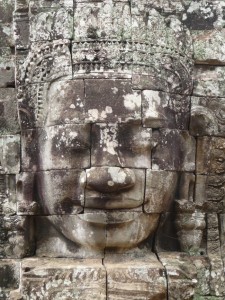
The impressive bas-reliefs represent everything from battles to mythological scenes, and even depictions of mundane everyday life such as markets and bullock carts. The temple is described as “the most striking expression of the baroque style” of Khmer architecture, as contrasted with the classical style of Angkor Wat. The Bayon Temple sits in the exact centre of Angkor Thom the “last and most enduring capital city of the Khmer empire.”
We were delayed for about 30 minutes on our way to the next stop at Preah Khan temple due to a broken down tuk tuk and a passing rain shower.
We sought shelter in the ‘North Gate’ tower, 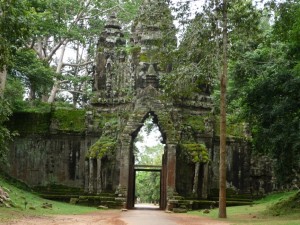 one of 5 ‘gates’ (four cardinal points and the fifth being the Victory Gate) which lead into Angkor Thom. These impressive gate structures stand 23 metres high and are styled similar to Bayon, with faces on all four sides of a massive stone head sitting directly above each gate. We walked up onto the 8 metre high wall that would have once enclosed the entire 9 sqkm area which makes up Angkor Thom.
one of 5 ‘gates’ (four cardinal points and the fifth being the Victory Gate) which lead into Angkor Thom. These impressive gate structures stand 23 metres high and are styled similar to Bayon, with faces on all four sides of a massive stone head sitting directly above each gate. We walked up onto the 8 metre high wall that would have once enclosed the entire 9 sqkm area which makes up Angkor Thom.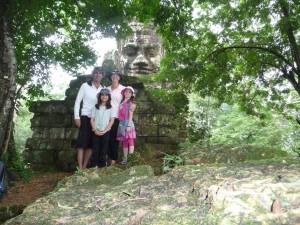
Preah Khan Temple was flat in comparison to the towers of Bayon but very large and wonderful to explore.
The kids likened it to the ruins of ‘Cair Paravel’ castle as described in the ‘Chronicles of Narnia’, and we imagined the passageways would lead to the ‘Treasure Room.’ 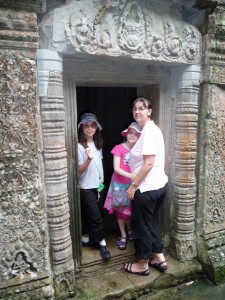
Originally a Buddhist monastary, all images of Buddha have been removed or vandalised during the Hindu resurgence. 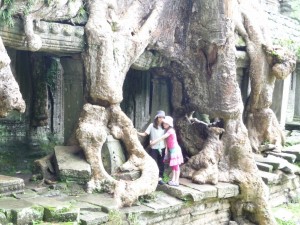
Thousands of Buddha carvings and statues in the temples were destroyed or removed in the late 13th century under instruction by the reigning king.
After stops at 2 further temples; East Mebon,
and Pre Rup(both Hindu temple-mountain style constructions rising several levels), we decided to call it quits for the day – it is tiring work going up and down those steps.
We all had a great day and were left in awe of the magnificence of it all and especially of what it once was.
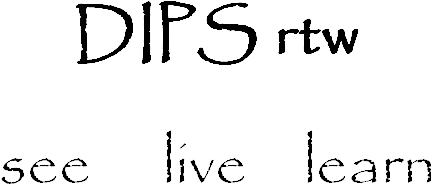
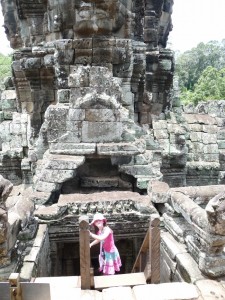
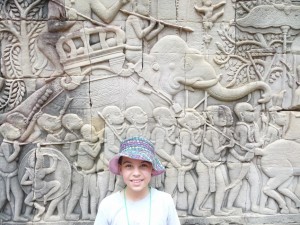
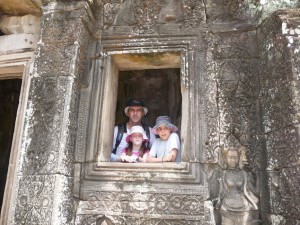
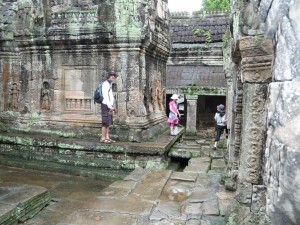
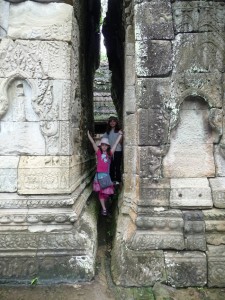
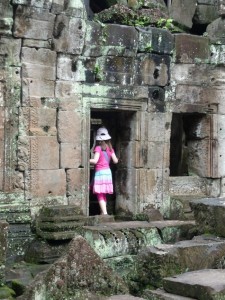
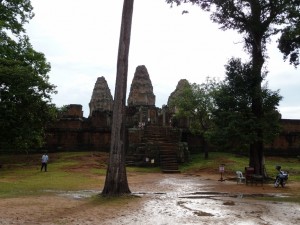
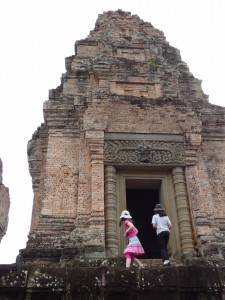
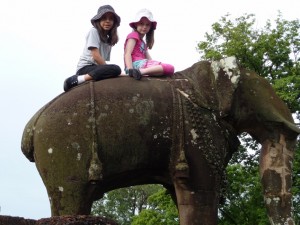
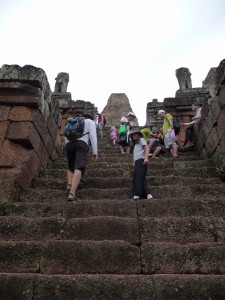
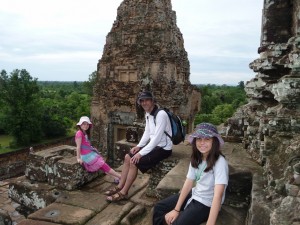
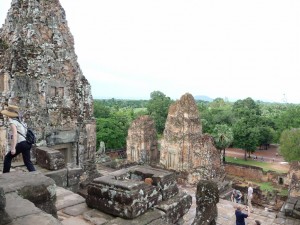
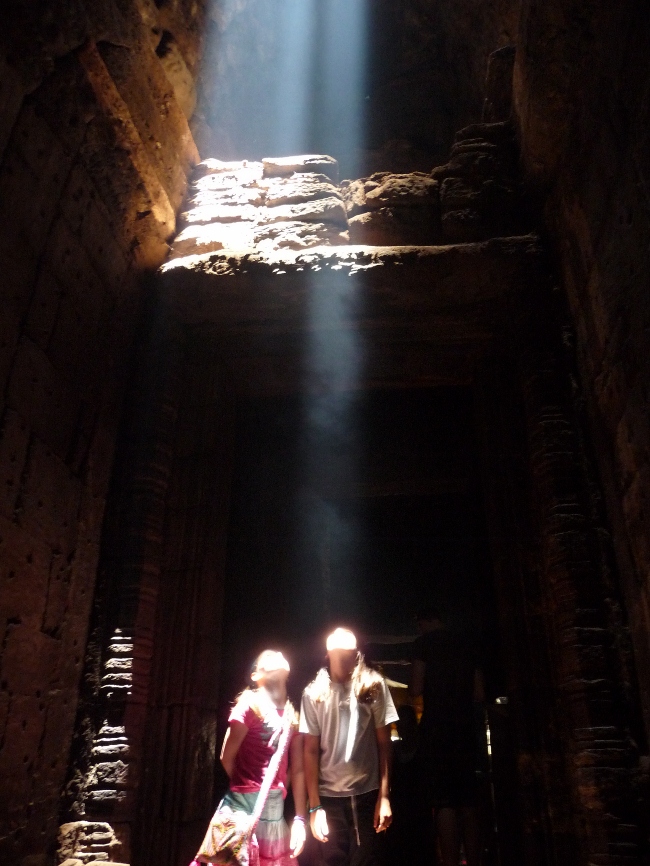
I am enjoying your journey. Afraid the stairs would be the end of me! Stay well and keep exploring.
Love Joy